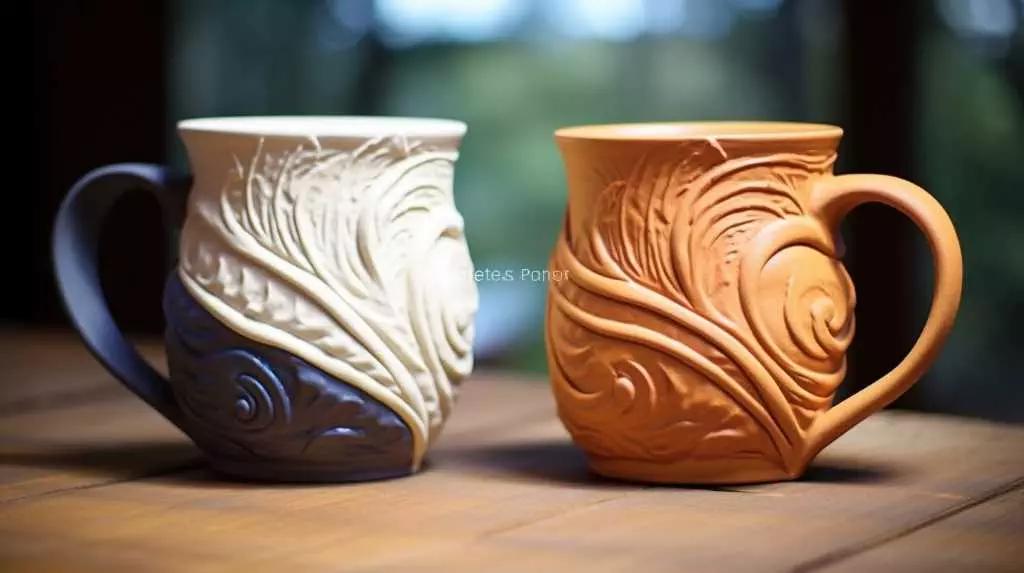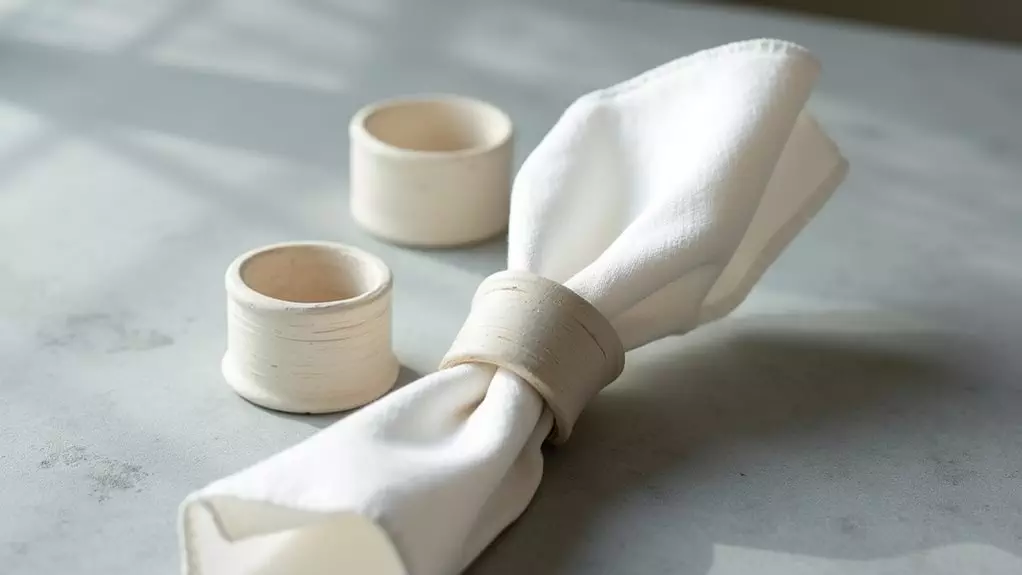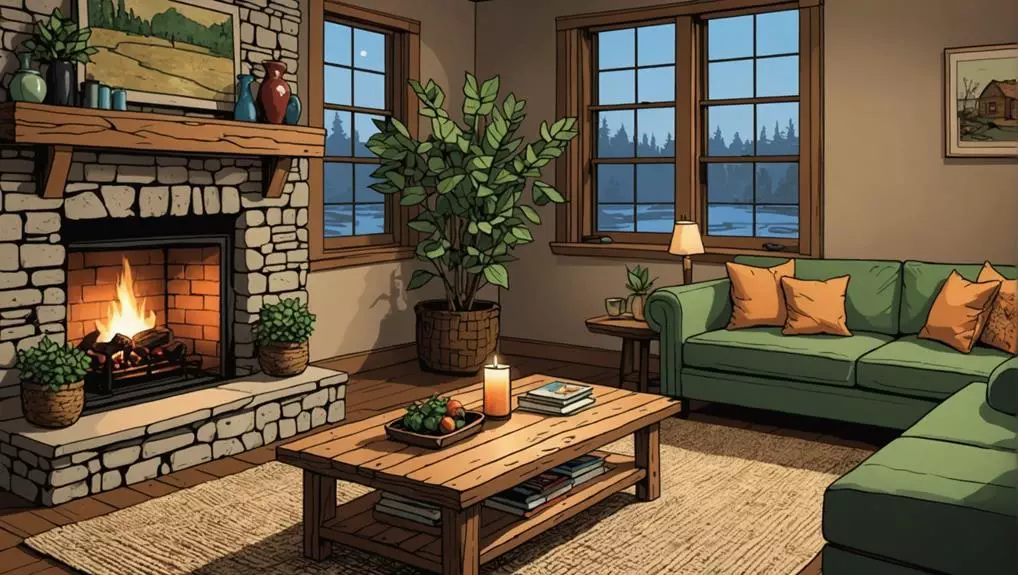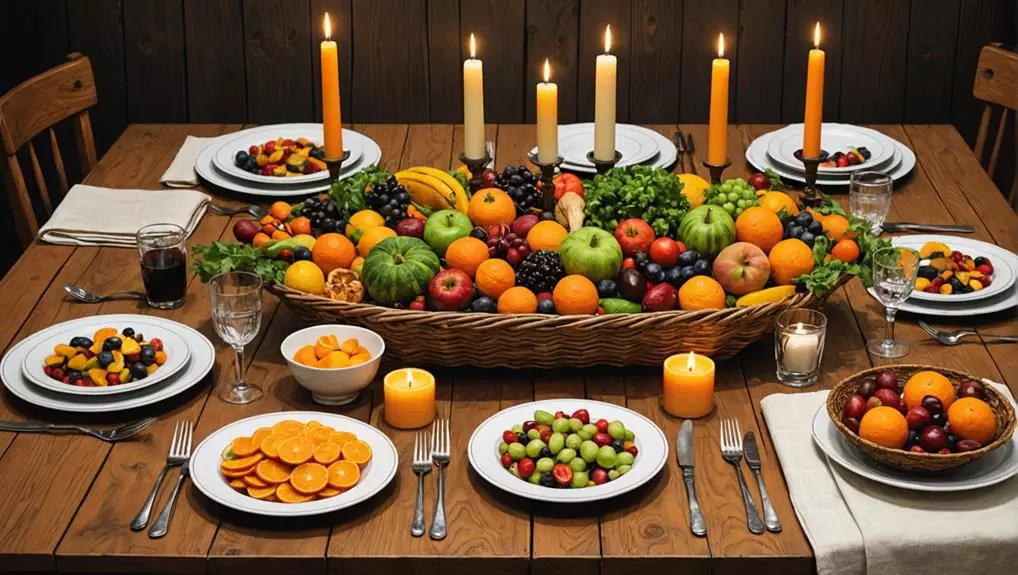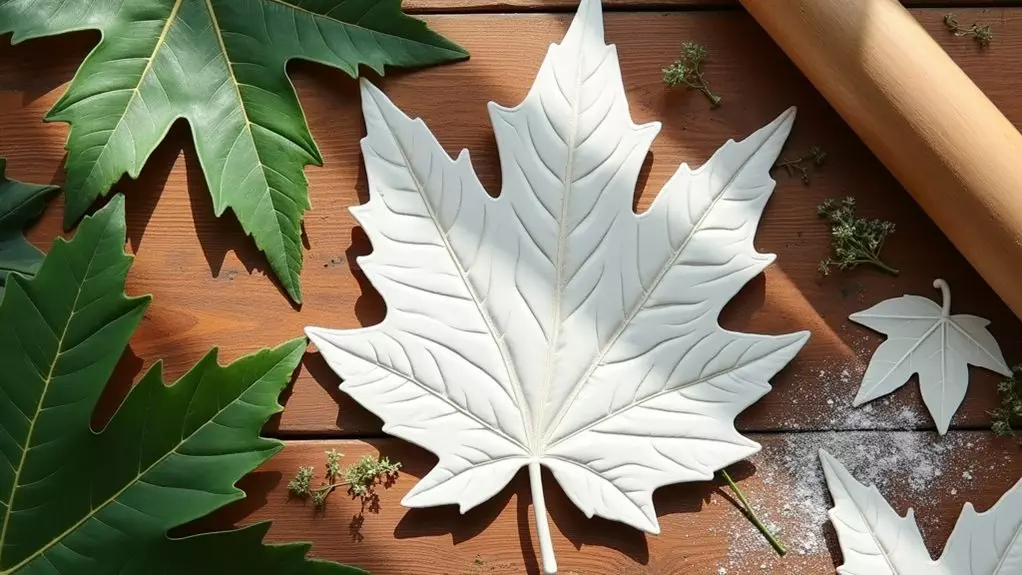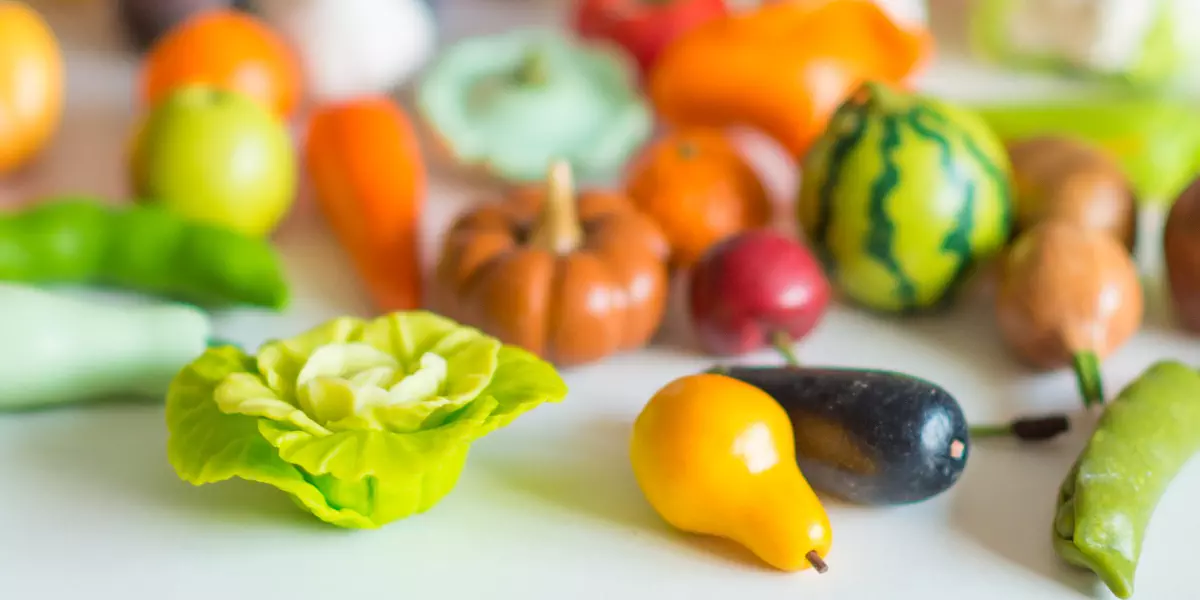Are you tired of being confined to a kiln? Discover the liberating world of air dry clay for pottery.
This versatile material offers endless creative possibilities without the need for high temperatures. With air dry clay, you can sculpt, mold, and shape to your heart’s content.
No longer restricted by the limitations of traditional pottery techniques, you can explore new methods and techniques to express your artistic vision.
Embrace the freedom of air dry clay and unleash your creativity.
Suitability
When considering the suitability of air dry clay for pottery, you’ll find that it offers a wide range of possibilities. One of the main advantages of air dry clay compared to traditional kiln firing is its convenience. Air dry clay doesn’t require a kiln or any other special equipment for firing. This makes it a great option for those who don’t have access to a kiln or prefer a more accessible and portable method. Additionally, air dry clay is a more affordable option compared to kiln-fired clay, making it ideal for beginners or those on a budget.
In terms of comparing air dry clay to polymer clay, air dry clay offers a more natural and organic look and feel. Polymer clay, on the other hand, can have a more synthetic appearance. Air dry clay also tends to be more lightweight and easier to manipulate, making it a preferred choice for sculpting and other intricate work. However, it’s important to note that air dry clay may not have the same level of durability as polymer clay, which can be baked to create a stronger, more resilient finished product.
Ultimately, the choice between air dry clay and polymer clay depends on the specific needs and preferences of the individual artist.
Techniques
To achieve different pottery techniques with air dry clay, you can explore a variety of molding, carving, and shaping methods. Here are some techniques you can try:
- Hand building: This technique involves using your hands to shape the clay into various forms. You can create pinch pots, coiled pots, or slab-built pieces by manipulating the clay with your fingers and palms.
- Sculpting: Sculpting with air dry clay allows you to create three-dimensional forms and intricate details. You can use tools like modeling tools, toothpicks, or even your fingers to sculpt the clay into the desired shape.
- Carving: Carving is a technique that involves removing clay from the surface to create patterns, textures, or designs. You can use carving tools or even household items like toothpicks, forks, or knives to create unique and intricate designs.
- Shaping: Shaping involves altering the form of the clay by bending, folding, or twisting it. You can use your hands or tools to shape the clay into different forms, such as bowls, vases, or sculptures.
Limitations
When using air dry clay for pottery, it’s important to be aware of its limitations.
One common issue is cracking, as air dry clay tends to shrink and crack as it dries. This can be frustrating, as it may ruin the overall appearance of the pottery.
Additionally, air dry clay lacks durability compared to other types of clay, making it more prone to breakage over time.
Cracking Issues
You may encounter cracking issues when using air dry clay for pottery. While air dry clay offers the convenience of not requiring a kiln for firing, it does have its limitations. Here are a few factors that can contribute to cracking and some troubleshooting tips to prevent it:
- Insufficient moisture: If the clay dries out too quickly, it can lead to cracks. To prevent this, mist the clay periodically or cover it with a damp cloth while working.
- Thick layers: Applying thick layers of clay can cause uneven drying and cracking. It’s recommended to build up the clay in thin layers, allowing each layer to dry before adding more.
- Inadequate support: If the clay isn’t adequately supported during the drying process, it can warp and crack. Use armatures or support structures to provide stability.
- Rapid temperature changes: Sudden changes in temperature can cause the clay to expand or contract, resulting in cracks. Avoid placing the clay in direct sunlight or near heat sources.
Lack of Durability
Air dry clay for pottery may lack durability due to its tendency to become brittle over time. This can raise durability concerns for artists and craftsmen who want their pottery to withstand the test of time.
While air dry clay is convenient and easy to work with, it may not be the best choice for long-lasting pottery pieces. Fortunately, there are alternative materials that can provide greater durability.
One such option is kiln-fired clay, which undergoes a firing process that increases its strength and durability. Kiln-fired clay is more resistant to cracking and breaking, making it a preferred choice for pottery that needs to withstand frequent handling or outdoor conditions.
Examples
Now let’s look at some examples that illustrate the points discussed earlier.
One key factor to consider is the clay drying time. Air dry clay typically takes longer to dry compared to other types of clay.
Additionally, firing requirements for clay can vary depending on the type of clay used and the desired outcome.
Lastly, the texture and appearance of air dry clay pottery may differ from pottery made with traditional firing methods.
These examples will help you understand the practical implications of using air dry clay for pottery.
Clay Drying Time
Once the clay has been sculpted, it will naturally begin to dry and harden over time. The drying time of clay can vary depending on various factors such as the type of clay used, the thickness of the sculpture, and the environmental conditions. Here are some examples to give you an idea of clay drying time:
- Thin and small sculptures may dry within a few days to a week.
- Medium-sized sculptures may take around one to two weeks to dry completely.
- Large and thick sculptures may require several weeks to a month for drying.
However, it’s important to note that the drying time can be affected by the clay’s moisture content and the surrounding humidity, as well as the desired level of clay shrinkage.
Remember to allow sufficient time for the clay to dry thoroughly before firing or applying any finishes to ensure the best results.
Firing Requirements for Clay
To properly fire your clay creations, you’ll need to follow specific temperature and time requirements. Firing techniques play a crucial role in achieving the desired outcome for your pottery.
The firing process involves subjecting the clay to high temperatures to remove any remaining moisture and to allow the clay particles to chemically bond together, resulting in a durable and strong finished piece. The firing temperature varies depending on the type of clay you’re using.
For example, earthenware clay is typically fired at lower temperatures ranging from 1832°F to 2012°F (1000°C to 1100°C), while stoneware and porcelain clays require higher temperatures, usually between 2102°F to 2372°F (1150°C to 1300°C).
It’s important to note that during firing, clay will experience shrinkage due to the removal of water. Understanding the firing requirements and clay shrinkage will help you achieve successful pottery results.
Clay Texture and Appearance?
To achieve the desired texture and appearance for your pottery, you can experiment with different clay types and firing techniques. Here are some examples:
- Stoneware clay: This type of clay is known for its durability and rich, earthy colors. It can be fired at high temperatures, resulting in a smooth and dense texture.
- Porcelain clay: Porcelain clay is famous for its fine texture and translucent quality. It requires careful handling and firing at high temperatures to achieve its characteristic delicate appearance.
- Raku firing: Raku firing is a technique that involves removing the pottery from the kiln while it’s still hot and placing it in a combustible material. This process creates unique and unpredictable patterns and colors on the surface of the clay.
- Sgraffito: Sgraffito is a technique where layers of differently colored clays are applied to the pottery, and then the top layer is scratched away to reveal the colors underneath. This creates intricate and decorative designs on the surface.
Benefits
You can enjoy several advantages when using air dry clay for pottery.
One of the main advantages is its convenience. Unlike traditional pottery clay, air dry clay doesn’t require a kiln or firing process. This means that you can create pottery at home without the need for specialized equipment.
Another advantage is its versatility. Air dry clay can be used for a wide range of pottery applications, including sculpting, hand-building, and throwing on a wheel. It’s also suitable for both beginners and experienced potters, as it’s easy to work with and has a forgiving nature.
Additionally, air dry clay is available in a variety of colors and finishes, allowing you to create unique and personalized pieces.
Comparisons
Compare air dry clay with traditional pottery clay to determine its suitability for pottery.
- Shrinkage: Air dry clay shrinks more than traditional pottery clay during the drying process. This can lead to a higher risk of cracking or warping in air dry clay pottery.
- Strength: Traditional pottery clay is generally stronger and more durable than air dry clay. It can withstand firing at high temperatures, resulting in a finished piece that’s resilient and long-lasting.
- Texture: Air dry clay tends to have a smoother texture compared to traditional pottery clay. This can make it easier to work with and achieve desired shapes and details.
- Firing techniques: Traditional pottery clay requires kiln firing to achieve its final hardness and durability. Air dry clay, on the other hand, can be air dried or oven baked for a convenient and accessible pottery experience.
Consider these comparisons when deciding between air dry clay and traditional pottery clay for your pottery projects. Each option has its own unique qualities and techniques, providing you with the freedom to choose the best fit for your artistic vision.
Conclusion
In conclusion, air dry clay can indeed be used for pottery. While it may not offer the same level of durability as kiln-fired clay, it’s still a viable option for creating beautiful and functional pottery pieces.
By mastering various techniques and understanding its limitations, artists can achieve impressive results with air dry clay. Although some may argue that kiln firing is the only way to achieve true pottery, air dry clay provides a convenient and accessible alternative for both beginners and experienced artists.

